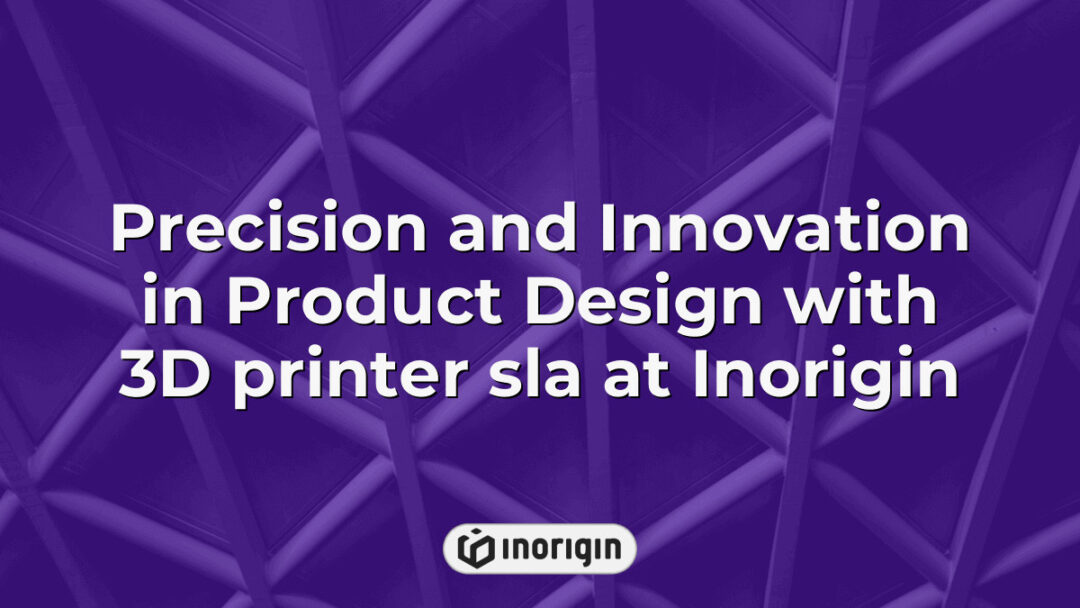As sunlight filters through the crystalline facets of a meticulously crafted dragon, a mesmerizing interplay of colors dances across the room, evoking the enchantment of a mythical realm where artistry meets technology. The emergence of 3D printing has revolutionized not only the manufacturing landscape but also the creative expressions of artisans and hobbyists alike, exemplified by the captivating allure of the Crystal Dragon 3D print. This remarkable fusion of precision engineering and imaginative design invites exploration into the intricate processes and innovative materials that breathe life into inanimate creations. By delving into the nuances of this artistic phenomenon, the article aims to illuminate the transformative impact of 3D printing on contemporary art and design, while showcasing how the Crystal Dragon serves as a symbol of boundless creativity and technological advancement.
| Aspect | Key Takeaway |
|---|---|
| Focus Keyword Importance | The crystal dragon 3D print combines advanced 3D printing technology and artistic design to create captivating, crystal-like figurines that showcase both creativity and precision engineering. |
| 3D Model Selection | Selecting an STL file tailored for crystal dragons ensures optimal detail and printability, aligning with skill levels and desired artistic outcomes. |
| Material Choice | Using transparent filaments such as clear PLA or PETG enhances the crystal effect, delivering clarity and strength while complementing intricate designs. |
| Printing Technology | Choosing between FDM and DLP Resin printing influences level of detail and finish quality, with resin offering superior clarity ideal for crystal aesthetics. |
| Post-Processing Techniques | Methods like sanding, solvent smoothing, and applying clear coatings refine surface smoothness and enhance the luminous, glass-like finish of the print. |
| Creative Display | Incorporating rotating bases, dynamic lighting, and thematic backgrounds elevates the visual impact and viewer engagement of crystal dragon models. |
| Maintenance | Regular gentle cleaning with soft brushes and protective coatings preserves print clarity and prevents degradation from UV exposure, extending lifespan. |
Selecting the Right 3D Model for a Crystal Dragon
In the world of 3D printing, choosing the right model can often feel like trying to catch smoke with your bare hands. With the growing popularity of 3D models, particularly in niche areas like the crystal dragon, the selection process demands careful consideration. For instance, the availability of STL files specifically designed for crystal dragon models has proliferated, leading to a myriad of options and variations. When assessing these models, one must take into account factors such as the level of detail, printability, and the intended purpose of the final piece. Additionally, the nuances between different STL files can significantly impact the end result; one file may offer a more intricate design while another could provide a simplified version better suited for novice printers. It becomes apparent that aligning the choice of 3D model with both personal skill levels and desired outcomes is critical for achieving satisfactory results. Ultimately, selecting the right 3D model for a crystal dragon involves a balance of aesthetic appeal, practical considerations, and personal preference, which, when harmonised, can lead to a rewarding printing experience.
Choosing the Ideal 3D Printing Material for a Crystal Look
When selecting the ideal 3D printing material for a crystal-like appearance in a dragon model, the symbolism of glass—reflecting clarity and strength—serves as the foundational concept. Transparent filaments such as clear PLA or PETG emerge as the preferred choices, accentuating the intricate features of the design while mimicking the shimmering qualities of a crystal surface. Often regarded for their ease of use and compatibility with print-in-place techniques, these materials allow for a seamless merging of form and function. In conjunction with this, factors like layer adhesion and print resolution further influence the final output; higher resolutions tend to yield smoother finishes, enhancing the overall aesthetic. Additionally, while standard filaments provide satisfactory results, experimenting with specialty materials like resin could yield more striking outcomes; the minute details encapsulated in a resin print often surpass those of traditional methodologies. Adapting the selection to specific project requirements not only magnifies the visual impact of the dragon model but also engages the viewer’s imagination, transforming an ordinary representation into a captivating work of art.
Step-by-Step Guide to 3D Printing a Crystal Dragon
Creating a crystal dragon through 3D printing can be likened to crafting a masterpiece from a block of marble; both require precision, patience, and an understanding of the materials involved. This step-by-step guide to 3D printing a crystal dragon begins with the selection of the right 3D printing technology, typically FDM or SLA, which can yield distinct results in terms of detail and finish. Once the technology is determined, the next stage involves choosing the appropriate filament or resin that mimics the clear, reflective qualities of crystal. For instance, transparent or translucent filaments are often favoured, but specific brands, like PETG or PLA with special additives, can elevate the outcome. Following this, a well-prepared 3D model should be obtained, which might involve either designing unique assets using software like Blender or obtaining pre-existing models from repositories like Thingiverse.
Transitioning to the actual printing process, careful calibration of the printer is paramount; adjustments in layer height and print speed significantly impact the final texture. After printing, post-processing steps such as sanding, polishing, or applying a clear coat can enhance the crystalline appearance, giving the dragon an ethereal glow. Through meticulous attention to these steps, a truly enchanting crystal dragon can emerge, showcasing the intersection of artistry and technology in modern 3D print practices. Thus, the journey from concept to reality encapsulates not only the technical skill involved but also the creativity that lies at the heart of design.
Post-Processing Techniques for Crystal-Like Finishes
In the pursuit of achieving crystal-like finishes on 3D printed models, particularly in the context of a crystal dragon, a variety of post-processing techniques can be employed. Initially, it is essential to consider options such as sanding, which allows for the smooth removal of layer lines, ultimately enhancing the overall aesthetic appeal of the piece. Following this step, the application of solvents, like acetone, on specific filament materials can facilitate a more glass-like result; this technique often yields a distinctive reflective quality that mimics actual crystal. Furthermore, the use of clear coatings, such as epoxy resin, not only provides an additional layer of shine but also serves to protect the underlying material, ensuring durability. In contrast, for those aiming for a more decorative approach, the introduction of pigments or dyes at this stage can transform the piece’s appearance while still maintaining that essential crystal resemblance. Collectively, these methods highlight the significance of meticulous post-processing, demonstrating how attention to detail can result in stunning decorative elements that effectively represent the intricate beauty of crystal forms.
Showcasing Stunning Crystal Dragon Prints in Creative Displays
Showcasing stunning crystal dragon prints in creative displays presents a unique opportunity to bring artistry and innovation into home and office environments. First, the natural allure of crystal dragons prompts various design considerations—such as placement, lighting, and display materials—that can enhance their visual impact. Secondly, employing articulating structures, like rotating bases or tiered arrangements, allows for optimization of viewing angles, creating a dynamic experience for observers. Finally, custom lighting techniques, including LED strips and spotlights, can elevate the effect further, transforming the printed creatures into captivating centrepieces.
To illustrate these concepts, consider the following ideas for creative displays:
- Layered Platforms: Use multiple levels to create depth in the display, allowing different perspectives of each dragon to be appreciated.
- Interactive Elements: Incorporate mobile app-controlled lighting or rotation mechanisms, thus engaging viewers in an interactive experience.
- Thematic Backgrounds: Position the prints against backdrops featuring landscapes or textures that complement their elegance, enhancing the overall aesthetic.
In employing these strategies, the integration of crystal dragon prints becomes more than a mere decorative choice; it manifests as an expressive statement within a space. Consequently, the aesthetic appeal combined with the innovative display enhances both enjoyment and appreciation, ultimately inviting admiration from casual visitors and enthusiasts alike.
Frequently Asked Questions
What is the history or lore behind crystal dragons in mythology?
In various mythologies, crystal dragons serve as ethereal guardians, embodying purity, wisdom, and divine mystery. They may be likened to the luminescent spirits that dwell in the hearts of mountains, safeguarding treasures only the worthy may behold. These beings often appear in the lore of diverse cultures, with their origins tracing back to ancient stories in eastern traditions, where they are revered as symbols of prosperity and good fortune. For instance, in Chinese mythology, dragons are frequently associated with water, related to rainfall and agricultural fertility, and the crystal variant enhances their importance as bringers of clarity and truth. Meanwhile, in Western narratives, particularly during the Medieval period, the crystalline form of dragons was often depicted in alchemical texts, signifying transformation and the pursuit of philosophical enlightenment. Such narratives reflect the multifaceted nature of these creatures, revealing their symbolic representations in varied contexts. Over centuries, the imagery of crystal dragons has evolved, intertwining folklore with cultural values, ultimately establishing them as enduring archetypes that resonate with the human experience, denoting aspiration and the seamless interaction between the material and spiritual worlds.
Can I use a regular 3D printer to create a crystal-like effect, or do I need a specialized printer?
The pursuit of achieving a crystal-like effect in 3D printed objects evokes images of refracted light dancing playfully within finely crafted facades. When considering whether a standard 3D printer can accomplish this goal, several key factors must be evaluated. Firstly, the type of filament used plays a significant role; filaments such as clear or translucent PLA (Polylactic Acid) have the potential to create a glass-like finish, yet the printing techniques employed must also be taken into account. Techniques like layering, infill patterns, and print settings can influence the final appearance; for instance, adjusting the layer height to finer settings could contribute to the smoothness of the surface, enhancing the light diffusion. Additionally, after-print processes may further augment this effect through sanding or the application of specific coatings. However, while many standard 3D printers equipped with the right filament and settings can produce aesthetically pleasing results that mimic crystal surfaces, dedicated printers designed for resin or specialized materials can yield an even more authentic finish, as these technologies allow for higher detail and clarity. Therefore, the decision on whether to utilize a regular 3D printer or invest in a specialized model hinges on the desired outcome, the level of detail required, and the resources available for post-processing techniques.
Are there any specific maintenance tips for keeping my crystal dragon prints looking their best?
The upkeep of 3D-printed crystal dragons can significantly influence their aesthetic appeal and longevity. A common theory posits that merely rinsing prints under water is sufficient for maintenance; however, this is often an oversimplification. Regular cleaning is indeed crucial, but the technique employed plays a significant role. For example, employing a soft brush alongside soapy water can effectively remove dust and fingerprints without damaging the delicate surfaces characteristic of these prints. Additionally, storing the prints away from direct sunlight and in a controlled environment can help prevent the onset of yellowing caused by UV exposure. It is equally important to consider the use of a protective coating; applying a clear sealant can enhance the shine, safeguarding against moisture and abrasion. Undertaking these maintenance activities not only helps preserve the visual integrity of the crystal dragon prints but also extends their lifespan significantly, allowing enthusiasts to relish their creations for years to come.
Conclusion
The successful execution of a 3D printed crystal dragon, through meticulous selection of models and materials and advanced post-processing techniques, yields stunning artifacts that resonate with the aesthetic aspirations of contemporary craftsmanship. Such achievements may very well evoke the splendor of the mythical artisans of ancient civilizations, showcasing modern innovation intertwined with timeless artistry.
Related posts:
- Innovations and Artistic Precision in 3D Printed Dragon Creations at Inorigin
- Intricate Layering and Material Precision for Flawless 3D Print Dragon Creations
- 3D printed dragons Crafted with Precision: Materials, Design, and Future Innovations at Inorigin
- 3D printer dragon designs blending artistic detail with engineering precision at Inorigin
- Intricate Designs and Expert Techniques Behind a 3D Printed Dragon Egg
- Precision Techniques and Material Choices for an Exceptional Dragon 3D Print




